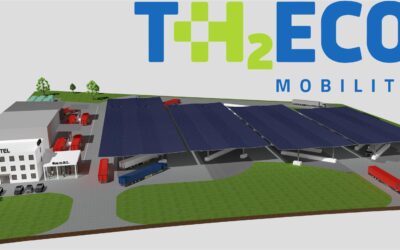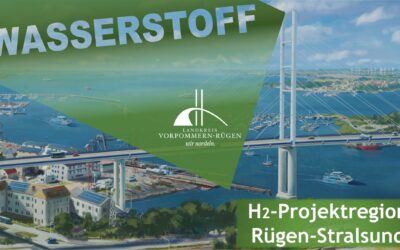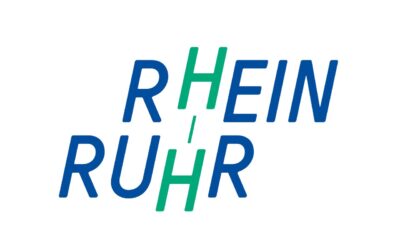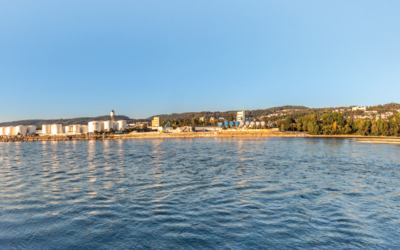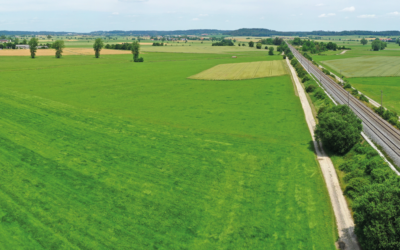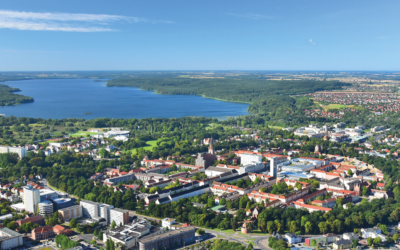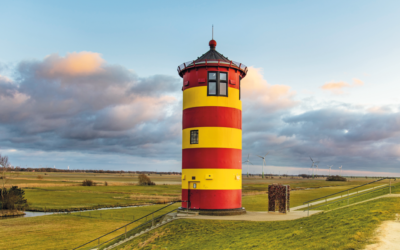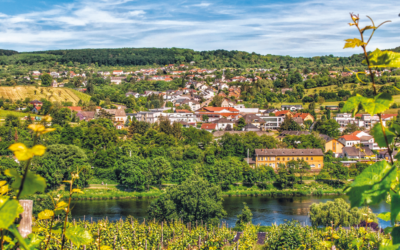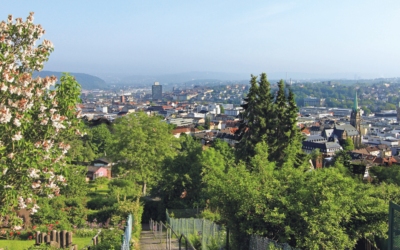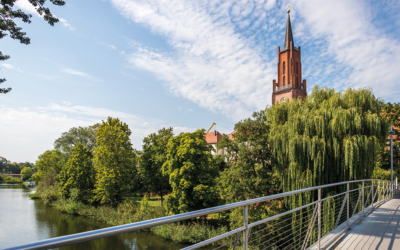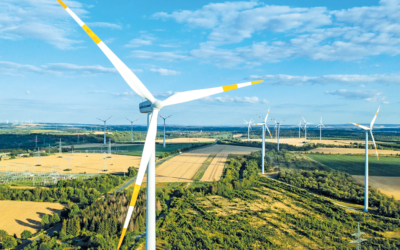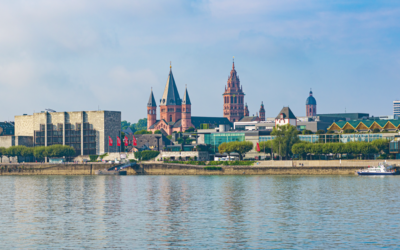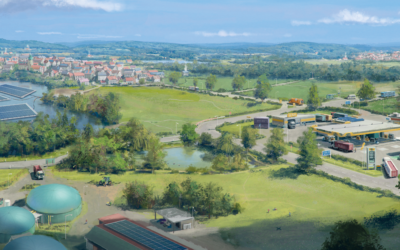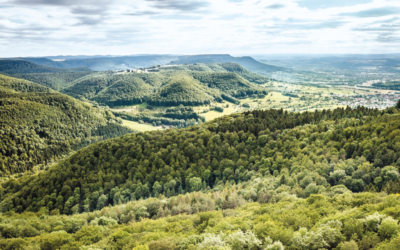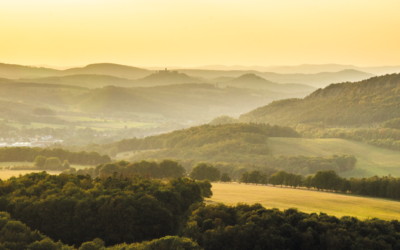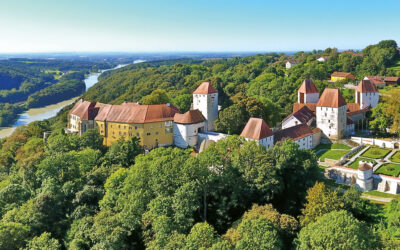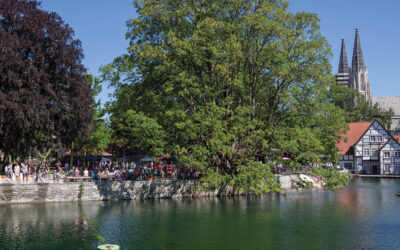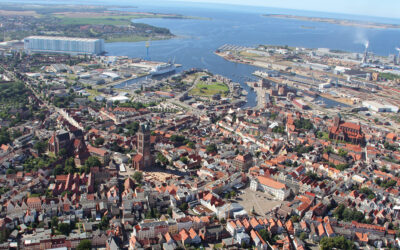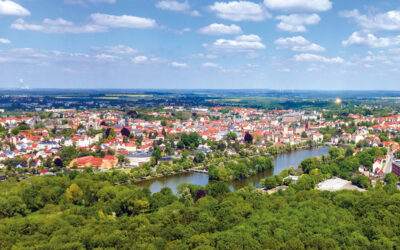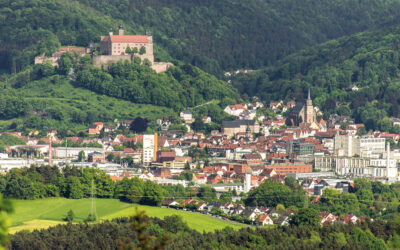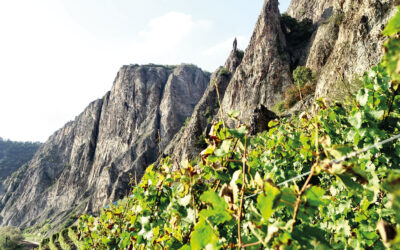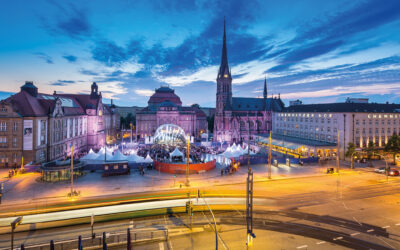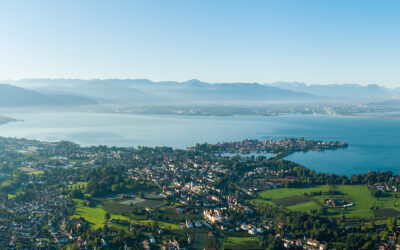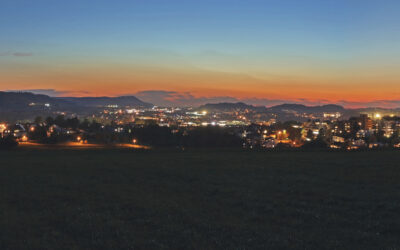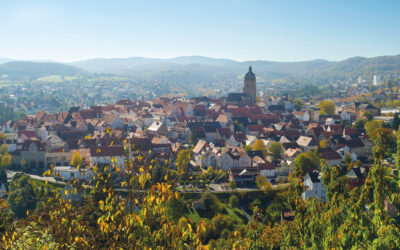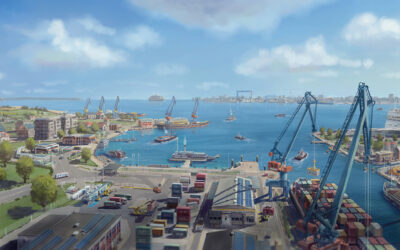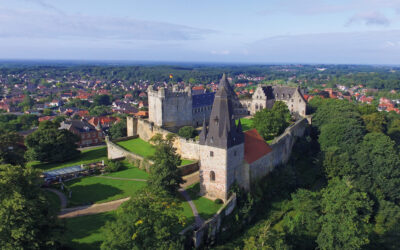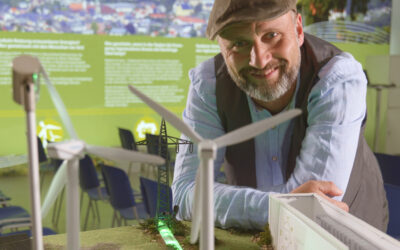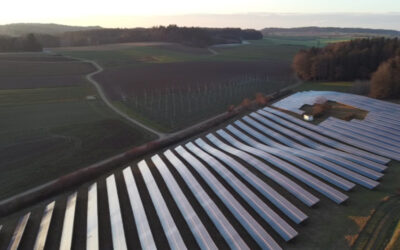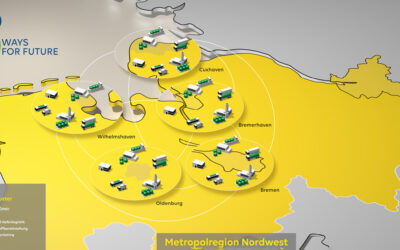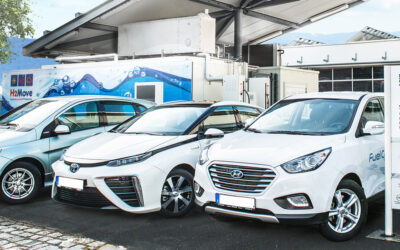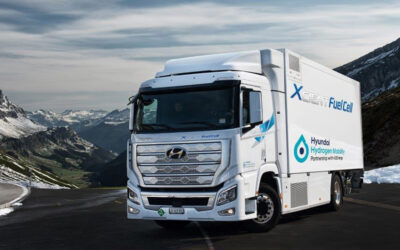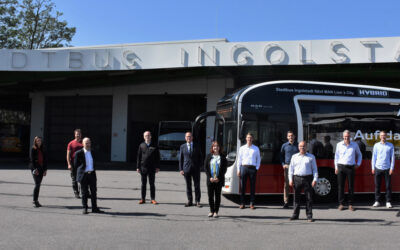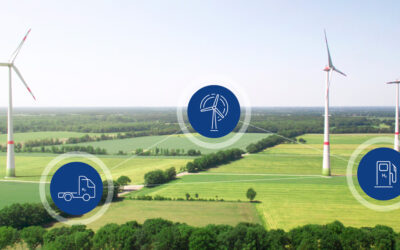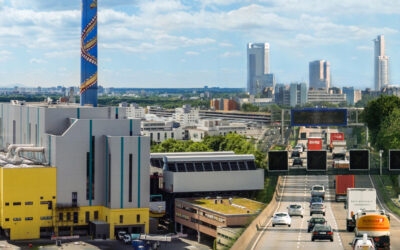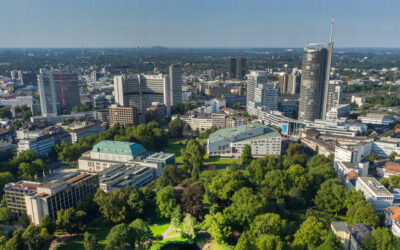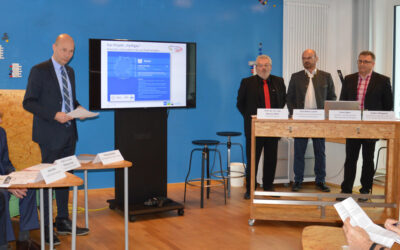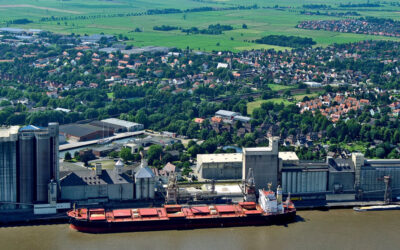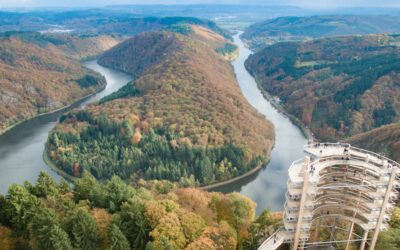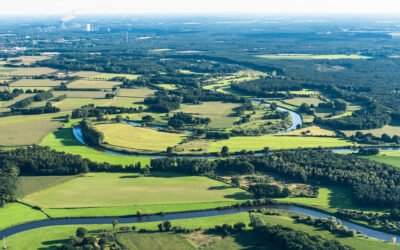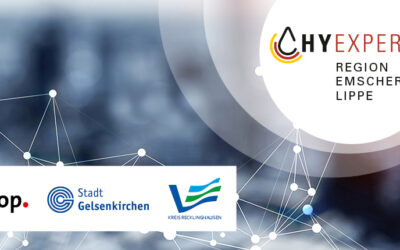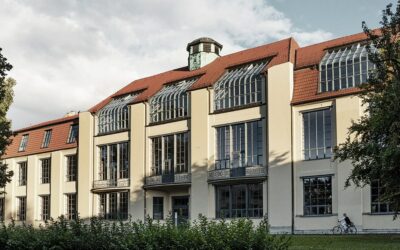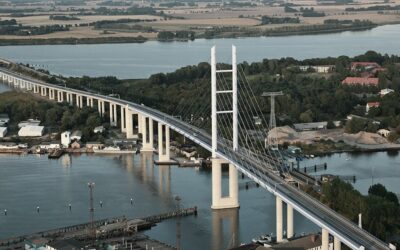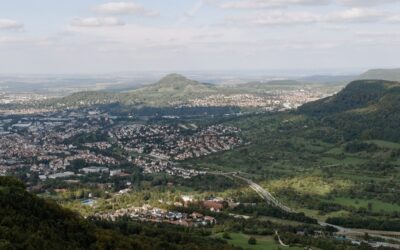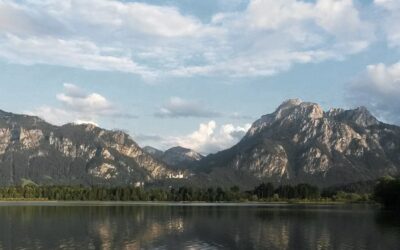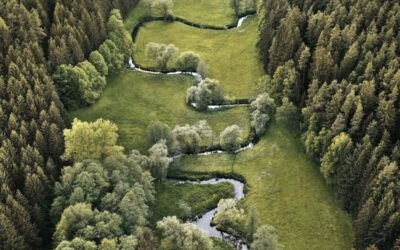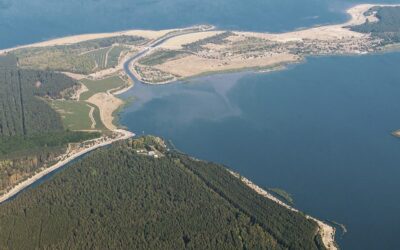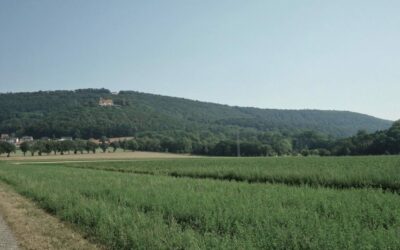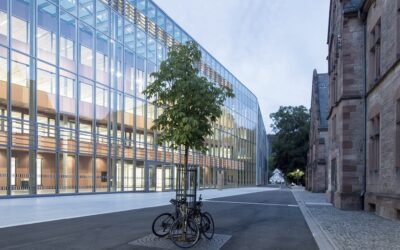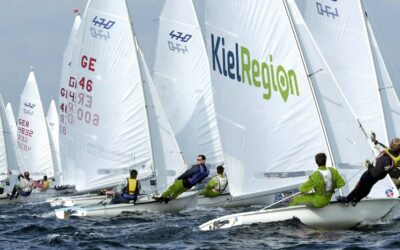Project finder
HyPerformer II: TH2ECO-Mobility
The initial foundations for the TH2ECO MOBILITY project were laid in 2019. The Thuringian Ministry of Energy, Environment and Nature Conservation (TMUEN – Thüringer Ministerium für Energie, Umwelt und Naturschutz) commissioned EurA AG to conduct a feasibility study on the construction and operation of a hydrogen fuelling station for trucks at the Erfurt freight centre (GVZ – Güterverkehrszentrum), which yielded a positive result.
HyPerformer II: H2 project region Rügen-Stralsund
The HyPerformer region H2Rügen-Stralsund is pursuing the development of a central hydrogen hub (production, distribution and consumer infrastructure)
HyPerformer II Rhein-Ruhr
The HyPerformer Rhine-Ruhr region is pursuing the development of infrastructure and hydrogen mobility in the Ruhr area.
HyStarter II: Region Bendorf
Bendorf am Rhein is an independent town in the district of Mayen-Koblenz in Rhineland-Palatinate with a population of around 17,000. In addition to the main town, it consists of the districts of Sayn, Mülhofen and Stromberg.
HyStarter II: District of Eichstätt
The district of Eichstätt with its 134,000 inhabitants and 30 municipalities is the geographical centre of Bavaria. Its diversity makes it unique: In virtually no other district are tradition and progress, nature-oriented life and highly productive work, the preservation of history and forward-looking action so closely intertwined.
HyStarter II: InterFranken special purpose association
The InterFranken special purpose association (Zweckverband InterFranken) is a municipal alliance of eight cities and municipalities. Members include: Diebach, Dombühl, Feuchtwangen, Schillingsfürst, Schnelldorf, Schopfloch, Wettringen and Wörnitz. InterFranken is located in the west of the Ansbach district at the A6/A7 motorway junction.
HyStarter II: State Capital Munich
The state capital of Munich is one of the most sought-after locations for business and innovation in Europe. The city on the Isar River is characterised by renowned global players, especially in the industrial and high-tech sectors, an innovative SME sector and a creative, broad-based start-up scene.
HyStarter II: Region Neubrandenburg/MSE
The Mecklenburg Lake District (Landkreis Mecklenburgische Seenplatte), with the four-gate city of Neubrandenburg as its main centre, is the largest district in Germany in terms of area, with around 280,000 inhabitants.
HyStarter II: Region East Frisia
The coastal region of East Frisia (Ostfriesland) is located in the extreme north-west of Lower Saxony and consists of the three districts of Aurich, Leer and Wittmund as well as the independent city of Emden. Covering an area of 3,142 square kilometres, 469,000 inhabitants live in the region.
HyStarter II: Municipality of Perl
The municipality of Perl is located in the district of Merzig-Wadern, directly in the border-free three-country juncture of Germany, Luxembourg and France, in the heart of the greater Saar-Lor-Lux region and in the midst of the four centres of Saarbrücken, Metz, Luxembourg and Trier.
HyExperts II: City of Hagen
The city of Hagen, with a population of around 195,000, is considered the connecting link between the Ruhr region and the Sauerland. Due to its special geographical location and the high density of energy-intensive steel processing and logistics companies, Hagen has excellent conditions for entering the hydrogen age.
HyExperts II: District of Havelland
The 164,000-inhabitant Havelland district is located in the west of Brandenburg and borders Berlin in the east. Havelland is known far beyond its borders not only through Fontane’s literature (Herr von Ribbeck), but also because of its many nature reserves – environmentally friendly living and farming has long been an important issue here.
HyExperts II: District of Helmstedt
Braunschweig, Gifhorn, Goslar, Helmstedt, Peine, Salzgitter, Wolfenbüttel, Wolfsburg – a total of three cities and five municipal districts belong to the region of South-East Lower Saxony (SüdOstNiedersachsen). From the Harz and the Heath to Hightech and HyExpert.
HyExperts II: Mainz
In Mainz, one of Germany’s oldest cities, tradition and progress are not conflicting concepts. Here, a modern hub for business, media and science has emerged that is developing dynamically and opening up great future opportunities for the city and the people who live here.
HyExperts II: District of NEW
The district of Neustadt an der Waldnaab is the eighth largest district in Bavaria and is located in the northern Upper Palatinate (Nordoberpfalz). With an area of 1,428 km² and 66 inhabitants per km², it offers excellent opportunities for development. A total of just under 95,000 people live in the NEW region.
HyExperts II: Districts of Reutlingen and Tübingen
The districts of Reutlingen, with about 290,000 inhabitants, and Tübingen, with about 230,000 inhabitants, are located in the Neckar-Alb region in southwestern Germany.
HyExperts II: Rügen-Stralsund Region
The district of Vorpommern-Rügen is located in the north-east of Mecklenburg-Western Pomerania directly on the Baltic Sea and is the fifth largest district in Germany in terms of area.
As a windy “beach district” with several hundred kilometres of coastline and characterised by tourism, there is a high capacity for generating wind power. A population totalling 225,889 resides in the district.
HyExperts II: District of Warburg Region
The district of Wartburg, located in western Thuringia, has 160,000 inhabitants and is the most populous and largest district in Thuringia. It is also Thuringia’s strongest industrial region, characterised by the automotive industry, mining and the dynamically growing sectors of metalworking, mechanical engineering and
healthcare.
HyExperts II: District of Passau
With 192,000 inhabitants, the district of Passau in eastern Bavaria is one of the five largest districts in the Free State of Bavaria and is economically highly characterised by the automotive and engineering industries, among others. The integrated climate protection concept focuses strongly on the district’s leading position in the production of solar power.
HyStarter II: District of Soest So-H2
The district of Soest is located in the eastern centre of North Rhine-Westphalia in the administrative district of Arnsberg.
14 municipalities and seven cities belong to this industrially shaped, rural district with about 302,000 inhabitants. The district’s own climate protection concept is currently being updated in a parallel process and is intended to highlight pathways to achieving climate neutrality.
HyStarter II: Region Westpfalz
The Westpflaz (West Palatinate) region is made up of the three independent cities of Kaiserslautern, Pirmasens and Zweibrücken and the four administrative districts of Kusel, Kaiserslautern, Südwestpfalz and Donnersbergkreis. Approximately 520,000 inhabitants live in the region. In recent years, the area surrounding the scientific centre of Kaiserslautern has developed into one of the leading technology locations in southwestern Germany.
HyStarter II: Region Of Wismar
The Wismar region is characterised by its World Heritage status for its ensemble of historic buildings and its harbour. The glacially formed hinterland consisting of the coast and arable land has a large number of wind and solar plants, which contribute to the fact that more electricity is produced in the state than is consumed.
HyStarter II: District of Altenburger Land
Economically strong, family-friendly and culturally rich – that is the Altenburger Land district in the borders to Thuringia, Saxony and Saxony-Anhalt. A high standard of living and quality of life, the best location-based conditions for investors, and a good connection to the central German railway network are just a few of the advantages of our region.
HyStarter II: District of Kulmbach
The administrative district of Kulmbach is located in the heart of the administrative area of Upper Franconia in the Free State of Bavaria. It consists of 22 towns, markets and communities and has 72,000 inhabitants living in an area of 656 km². Innovative companies from a wide range of sectors have settled in the Kulmbach economic area. Together with the district of Kulmbach and university educational institutions, they form the H2-Allianz Landkreis Kulmbach+ (H2 Alliance Kulmbach+ District).
HyStarter II: Region of Rheinhessen-Nahe
The Rheinhessen-Nahe region is made up of the districts of Bad Kreuznach, Mainz-Bingen and Alzey-Worms. An area of 2,058 km2 is home to 482,872 inhabitants. The three districts comprise a total of seven independent towns and 22 municipalities.
HyStarter II: District of Göppingen
Geographically, the district of Göppingen in Baden-Württemberg can be located in the foothills of the Swabian Alb. With a total of nine towns and 29 other municipalities, the district is relatively rural and has abundant green and wooded areas. Excellent economic conditions meet a particularly charming landscape with a high recreational and tourist appeal.
HyExperts II: Chemnitz Region
Chemnitz and its surroundings have been considered the cradle of Saxon industry since the 18th and 19th centuries.
HyExperts II: AachenPLUS Region
The AachenPLUS regional network is made up of the city of Aachen, the Aachen city region, the districts of Düren, Euskirchen and Heinsberg, and the “Kolping” city of Kerpen. Approximately 1.58 million people live here across a total area covering 3,800 square kilometres.
HyExperts II: HyAllgäu*-Lake Constance Region
The district of Lindau (Lake Constance) is located in the extreme southwest of Bavaria at the junction between Lake Constance and Allgäu and is part of the quadrilateral region of Lake Constance (Vierländerregion Bodensee).
HyExperts II: H2Ostwürttemberg
The region of Ostwürttemberg is formed by the district of Ostalb and the district of Heidenheim. The 447,000 inhabitants are scattered among 53 cities and municipalities.
HyExperts II: North Hesse Region
The region of North Hesse comprises a total of five districts and the city of Kassel. The Werra-Meißner district is in charge of the application for “NordH2essen – Hydrogen Connects” (“NordH2essen – Wasserstoff verbindet”) for the entire region.
HyExperts II: KielRegion
The KielRegion comprises the state capital Kiel and the districts of Plön and Rendsburg-Eckernförde. Almost 645,000 people live in the KielRegion, which is about 23 percent of the population of Schleswig-Holstein on an area of 3,391 ha. With its 251 municipalities and towns, the KielRegion represents a very diverse living and economic area. The unique location on the Baltic Sea and the Kiel Canal makes the KielRegion, with its two deep-sea ports, the gateway to Scandinavia and the Baltic States.
HyStarter II: City of Bentheim
With 16,000 inhabitants, Bad Bentheim is located in the extreme south-western corner of Lower Saxony, bordering on North Rhine-Westphalia and the Netherlands. Bad Bentheim is known far beyond its borders as a health and recreation location, so it has long been a concern to preserve nature and live in harmony with it.
HyExperts I: District of Wunsiedel im Fichtelgebirge
HyExperts I: Hydrogen Model Region Fichtelgebirge, District of Wunsiedel im Fichtelgebirge, aim: District of Wunsiedel im Fichtelgebirge as a hydrogen region, duration: 06/20 to 11/21
HyPerformer I: HyBayern
Hydrogen Model Region Landshut – Munich – Ebersberg Districts of Landshut, Ebersberg, Munich, City of Landshut, aim: Establishment of a closed cycle of green H2 production, distribution and use, project volume: EUR 42 million, duration: 2020 to 2025
HyPerformer I: HyWays for Future
HyPerformer I: HyWays for Future, Northwest Germany, aim: Fuel supply with green hydrogen, project volume: EUR 64.2 million, duration: 2020 to 2023
HyExperts I: OWL
HyExperts I: HyDrive OWL, Ostwestfalen-Lippe, aim: Roadmap for the development of a regional hydrogen infrastructure, duration: 11/19 to 09/21
HyExperts I: City of Fulda
HyExperts I: HYWHEELS – Hydrogen-based commercial transport in Eastern Hesse to cut emissions in logistics and road transport, City of Fulda & Eastern Hesse, aim: Creation of an implementation-ready concept for Eastern Hesse for the market introduction of hydrogen/fuel cell technology from production to use in the forwarding/logistics sector with the aim of decarbonising the transport sector.
HyExperts I: City of Ingolstadt
HyExperts I: IN2H2 – Hydrogen Concept Ingolstadt, City of Ingolstadt, aim: Municipal enterprises as drivers for the development of a regional hydrogen economy, duration: 07/20 to 09/21
HyExperts I: District of Osterholz
HyExperts I: LastverkehrGoods transport with green hydrogen – Future Mobility, District of Osterholz, aim: Coupling of regional renewable energies with goods transport using H2, duration: 07/20 to 06/21
HyExperts I: MH2_Regio
HyExperts I: MH2Regio – Turning waste into mobility, City of Frankfurt/Main
Aim: Hydrogen from waste for users in the Frankfurt Rhine-Main region, duration: 11/20 to 12/21
HyExperts I: EgoH2 Ecosystem
HyExperts I: EgoH2 Ecosystem, City of Essen, aim: Zero-emission, sustainable mobility in metropolitan areas, Duration: 02/20 to 05/21
HyPerformer I: H2Rivers
HyPerformer I: H2Rivers, Rhine-Neckar Metropolitan Region, Aim: Development of the Rhine-Neckar region into a hydrogen model region in the mobility sector,
Project volume: 52.2 million euros,
Duration: 09/2020 to 08/2023
HyExperts I: HyAllgäu
HyExperts I: HyAllgäu, District of Oberallgäu, aim: Economic, regional production of green hydrogen, duration: 01/20 to 01/21
HyExperts I: H2BrakeCO2
HyExperts I: H2BrakeCO2, City of Brake, aim: CO2-free port and logistics processes through hydrogen technology using the example of the city of Brake, duration: 07/20 to 09/21
HyExperts I: H2 Model Region_Saar
HyExperts I: H2 Model Region_Saar, State of Saarland, aim: Demonstrative implementation of a model region for H2-applications in the fields of mobility, industry and efficient heat utilisation with CHP plants, Duration: 02/20 to 06/21
HyExperts I: H2 Region Emsland
HyExperts I: H2 Region Emsland, District of Emsland, City of Lingen, Aim: H2 Region Emsland – Nucleus for an integrated, industrial hydrogen market, Duration: 08/20 to 12/21
HyExperts I: Region Emscher-Lippe
HyExperts I: Region Emscher-Lippe, District of Recklinghausen, City of Bottrop, City of Gelsenkirchen, aim: overall concept for the use of H2 in mobility and logistics, duration: 09/20 to 08/21
HyExperts I: H2PURe
HyExperts I: H2PURe – Hydrogen Planning for the Ulm/Neu-Ulm Region, City of Ulm, aim: Establishment of the hydrogen region Ulm/Neu-Ulm, Duration: 06/21 to 12/22
HyStarter I: Hydrogen Region Weimar
HyStarter I: Hydrogen Region Weimar, City of Weimar & District of Weimarer Land The cooperation region of Weimar and Weimarer Land is located between the cities of Jena and Erfurt and thereby occupies the rural area located between the cities of Thuringia.
HyStarter I: Hydrogen Region Rügen-Stralsund
HyStarter I: Hydrogen Region Rügen-Stralsund, District of Vorpommern-Rügen, Island of Rügen & City of Stralsund. A large number of applications from a wide range of stakeholders have been received from Rügen and Stralsund to participate in the HyStarter project.
HyStarter I: Hydrogen Region Reutlingen
HyStarter I: Wasserstoffregion Reutlingen, District of Reutlingen. The district of Reutlingen is located in the Stuttgart metropolitan region and consists of the rural Alb plateau and the more industrially dominated Alb foothills which are home to a number of large companies such as Robert Bosch GmbH and ElringKlinger AG.
HyStarter I: Hydrogen Region Ostallgäu
HyStarter I: Hydrogen Region Ostallgäu, Municipality of Fuchstal, City of Kaufbeuren & District of Ostallgäu. The HyStarter Region Ostallgäu/Allgäu consists of the municipality of Fuchstal in the Upper Bavarian district of Landsberg am Lech as well as the district of Ostallgäu and the city of Kaufbeuren.
HyStarter I: Hydrogen Region District of Neustadt an der Waldnaab
HyStarter I: Hydrogen Region District of Neustadt an der Waldnaab, District of Neustadt an der Waldnaab. The district of Neustadt an der Waldnaab is located in northern Upper Palatinate and covers an area of 1,428 km² with a population of around 94,500 (as of 30.06.2018).
HyStarter I: Hydrogen Region Lausitz
HyStarter I: Hydrogen Region Lausitz, City of Cottbus, District of Bautzen, District of Dahme-Spreewald, District of Elbe-Elster, District of Görlitz, District of Oberspreewald-Lausitz & District of Spree-Neiße.
HyStarter I: Hydrogen Region Schaumburg
HyStarter I: Hydrogen Region Schaumburg, District of Schaumburg. The district of Schaumburg is a rural yet densely populated region and resembles Germany in miniature.
HyStarter I: Hydrogen Region Marburg-Biedenkopf
HyStarter I: Hydrogen Region Marburg-Biedenkopf, District of Marburg-Biedenkopf, University City of Marburg & Stadtwerke Marburg. The district of Marburg-Biedenkopf, with the university city of Marburg as the district capital, is a diverse and productive location with its own profile.
HyStarter I: KielRegion Hydrogen Region
HyStarter I: KielRegion Hydrogen Region, State Capital Kiel, District of Plön & District of Rendsburg-Eckernförde. In the middle of the true north and in the heart of Schleswig-Holstein lies the KielRegion.

